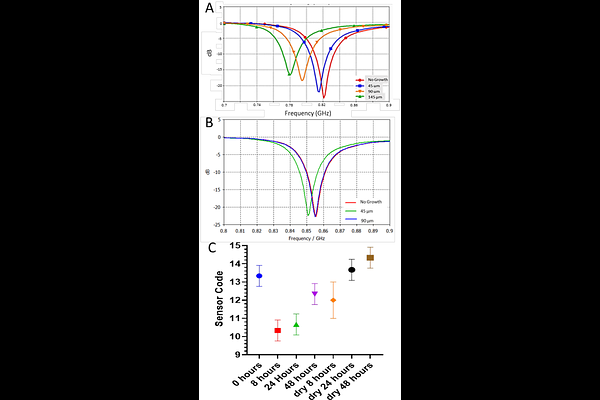Monitoring Candida albicans Biofilm Formation by Impedance Using Passive RFID

Monitoring Candida albicans Biofilm Formation by Impedance Using Passive RFID
Makarovaite, V.; A.J.R. Hillier, A. J. R.; Holder, S. J.; Gourlay, C.; Batchelor, J. C.
AbstractMedical implants are routinely colonized by microbial biofilms especially yeast biofilms such as those formed by Candida albicans. As medical implants move towards smart technology and IoT, it is more important than ever to understand the electrical properties of biofilm formation. Here we present an attempt at understanding how C. albicans biofilm formation effects sensor technology. We propose that as the biofilm matures, it becomes increasingly hydrophobic and undergoes a reduction in effective dielectric constant and ionic conductivity. This results in an impedance mismatch that disrupts capacitive coupling between the sensor and surrounding media, this effect that can be reliably detected. We show that a C. albicans biofilm changes its dielectric properties during maturation and, once mature, can be equated to a thin dielectric insulator. We demonstrate that these properties can be used to enable constant monitoring of a C. albicans biofilm using passive RFID, offering a new detection methodology that may be applied to surfaces known to be readily colonise.